Applying Ze Poured Fondant
So when last we left off I’d made a batch of poured fondant and left it sitting in a plastic bag on the countertop. Today I’d like to show you how you use that block of sugar putty on an actual cake. Of course most of the time bakers don’t use poured fondant on large cakes. The reason, because while it is delicious, it doesn’t give you a perfectly smooth and even finish. That’s OK in my book though, especially for a casual single-layer cake like I’m about to make. We start with, obviously, a single yellow cake layer that I’ve had stashed away in the freezer for moments like this. I actually prefer to work with frozen layers since they’re easier to carve and freezing doesn’t hurt them a whit. Start by trimming the brown edge off…
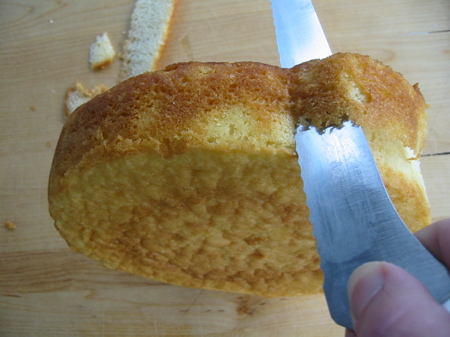
…then the top crust.
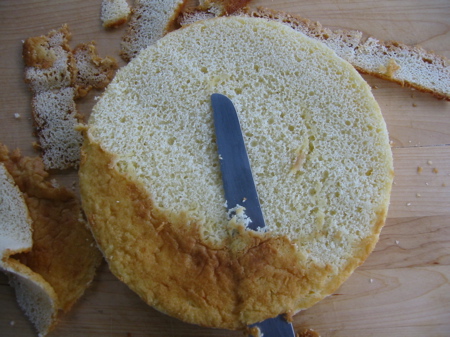
Why do this? Because poured fondant is semi-transparent. You’d be able to see these blotches beneath it. Also trimming gives the finished cake a more uniform shape with a nice flat top (those trimmings also make a wicked afternoon snack). What you’re left with then is a naked single layer like so:
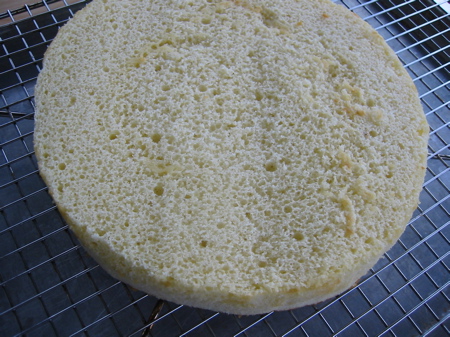
Now for a little “crumb coat” of apricot jam that I’ve brought to a boil, strained, and let cool. Your crumb coat can be any type of jam you wish, though you want to use something in the same color family as your icing, since as I said, poured fondant is semi-transparent. You can skip this step if you like, but I thought I’d show it since, well, it’s something I like to do.
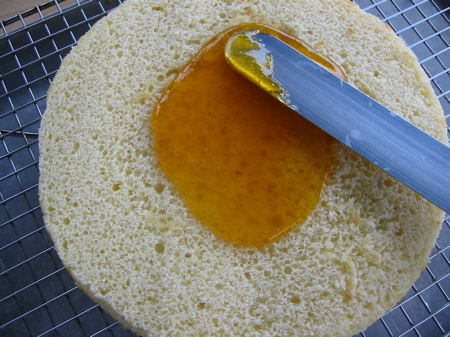
The idea here isn’t to create a thick “filling-like” layer, only to plug up holes in the crumb so the fondant goes on in a smoother coat. It has the added benefit of sticking down any errant crumbs.

Don’t forget those edges! And remember the reason for this coat is mostly functional. Gently scrape any excess off the cake. Once you’ve finished laying on the crumb coat, put the layer into the freezer while you get the fondant ready (you want the jam as firm and gummy as possibly so it won’t run when the fondant is applied).
So now we start the fondant. Beginning with a the clump of fondant I made last week, I put it into the top of a double boiler and pour in about half a cup of simple syrup (a 2-1 solution of sugar to water, brought to the boil, then cooled).

Apply a whisk and start to incorporate the syrup over very gentle heat.
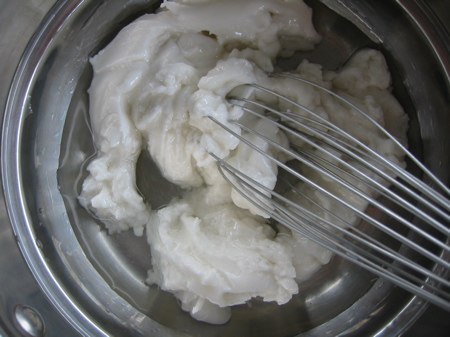
The idea here is to “dissolve” the fondant more than melt it. Yes, you want to apply a little heat, but if the temperature of the fondant rises over 110 degrees you’ll start to melt the small uniform crystals you’ve worked so hard to create. The result will be a dull matte finish instead of a glossy one, which is one of the main benefits of a poured fondant. So use heat only sparingly, and allow it to cool a bit before application (say, 5-10 minutes), since a warm fondant will melt your jam crumb coat, causing it to run. Once you’ve gotten the consistency you want (adding small amounts of syrup as necessary), go ahead and add any flavorings or colorings you’d like.
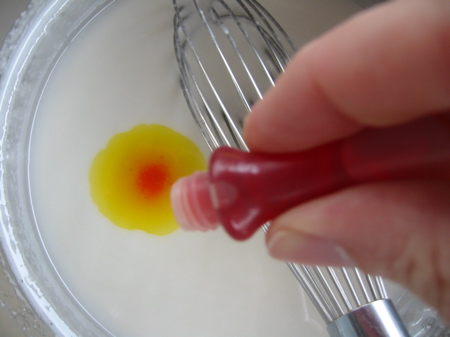
Oops! Too much color. This is going to end up as a sort of egg-yolk yellow instead of the paler canary I was hoping for…oh well, close enough for food blogging. So then, go ahead and pour a portion of your fondant on…
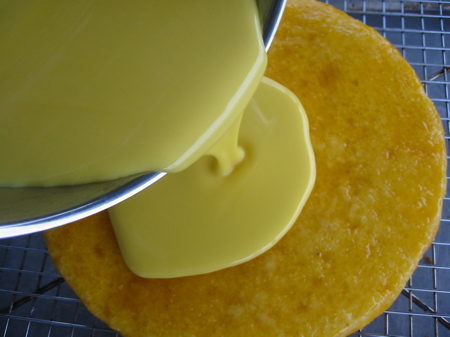
Then quickly go at it with your icing spatula, pushing it outward toward the edges and letting it drip over the sides.
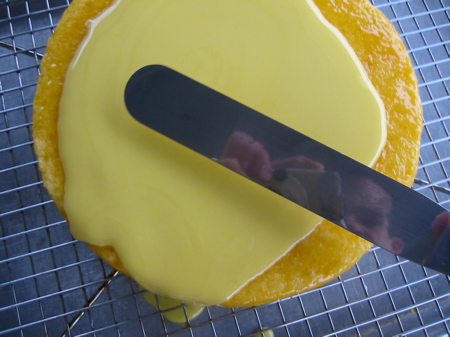
Once the top is covered you want to quickly smear the fondant around the edge so any additional fondant you pour over the cake will drip evenly down the sides.
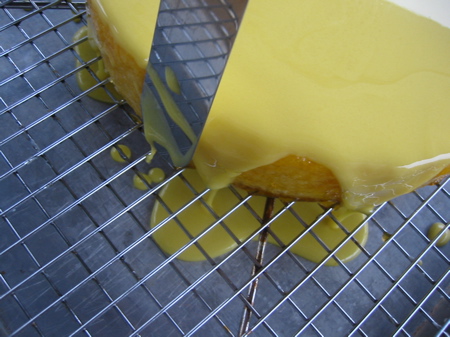
This fondant is a bit too thin, but no matter, you pour over a sheet pan for a reason. If too much of the fondant runs off the cake, just wait a few minutes for it to firm up on the sheet pan, pour it back into a waiting vessel and re-apply. In the end you’ll have something like this:
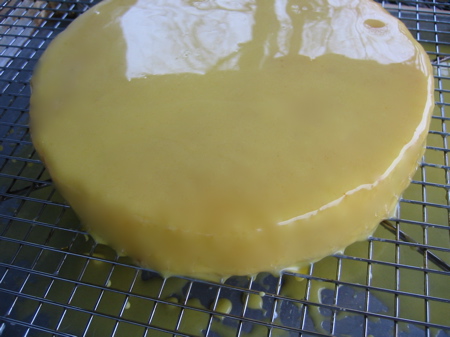
…a simple, delightful little iced dessert with a perfect ratio of icing to cake. Let it sit for twenty minutes or so for the fondant to firm (but not to the point it becomes brittle) and transfer it to a serving plate or a cardboard cake circle (ideally one with a wax top). Sorry about the color in this shot…it’s kind of a sickly yellow. What can I say, my light changed.
So there in a nutshell is poured fondant. Use it on a cake layer like this, on petits fours, coffee cakes, or as a base coat for decorated cookies. Yes, it’s a little fuss, but it yields a far more attractive and professional look than a powdered sugar and water “five-finger” icing, and without the mealy texture and cornstarch aftertaste. Do it once and you’ll see how easy it is, and how storable. An ideal thing, really, to stash away in the fridge or chest freezer for the day the cookie or pastry urge strikes.